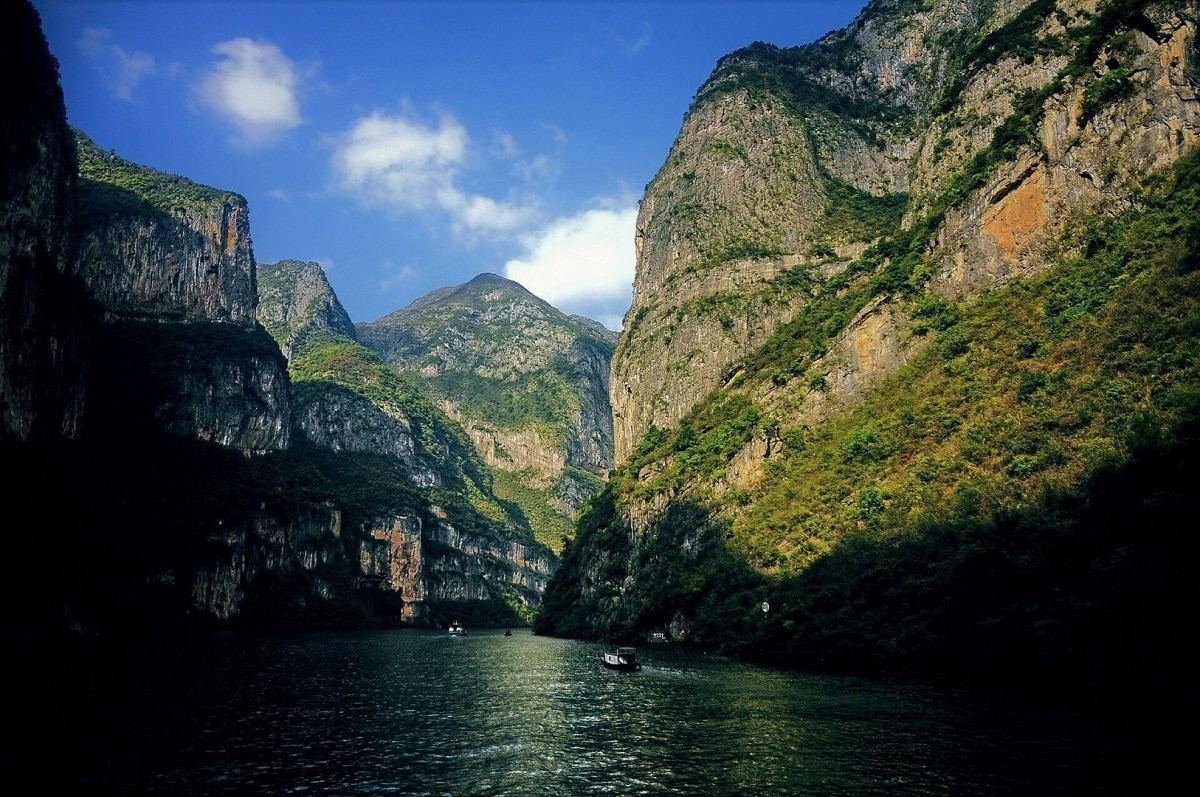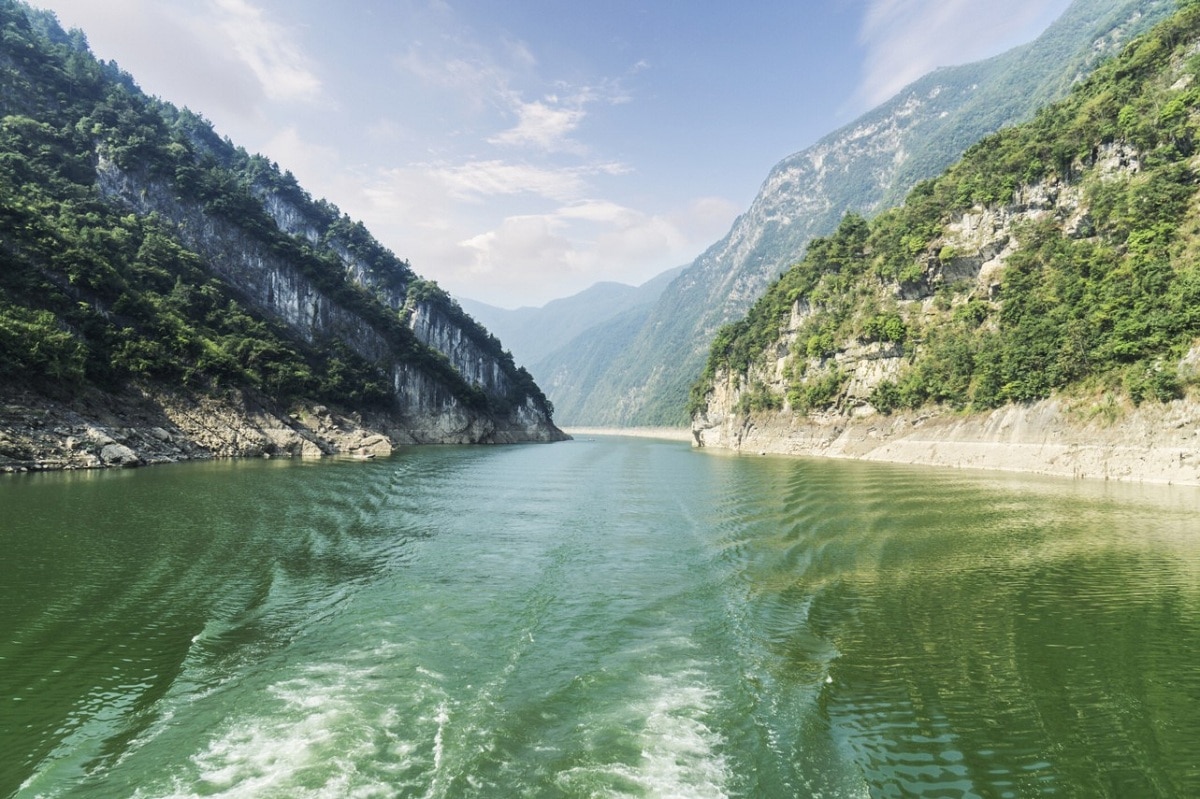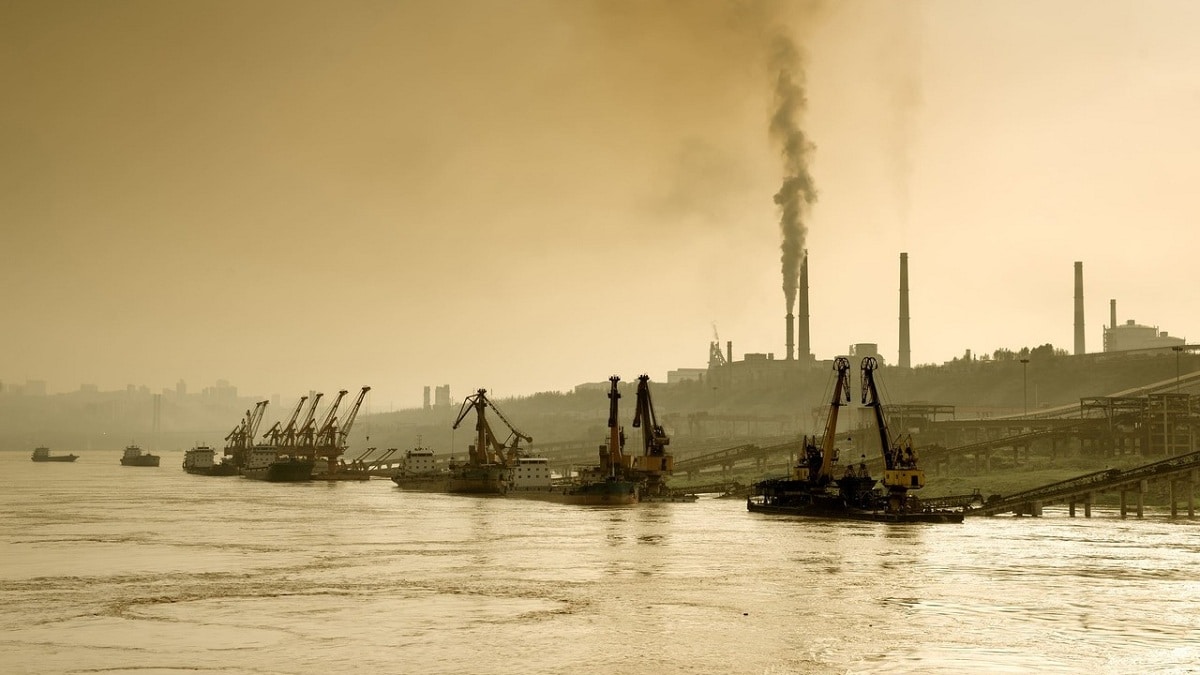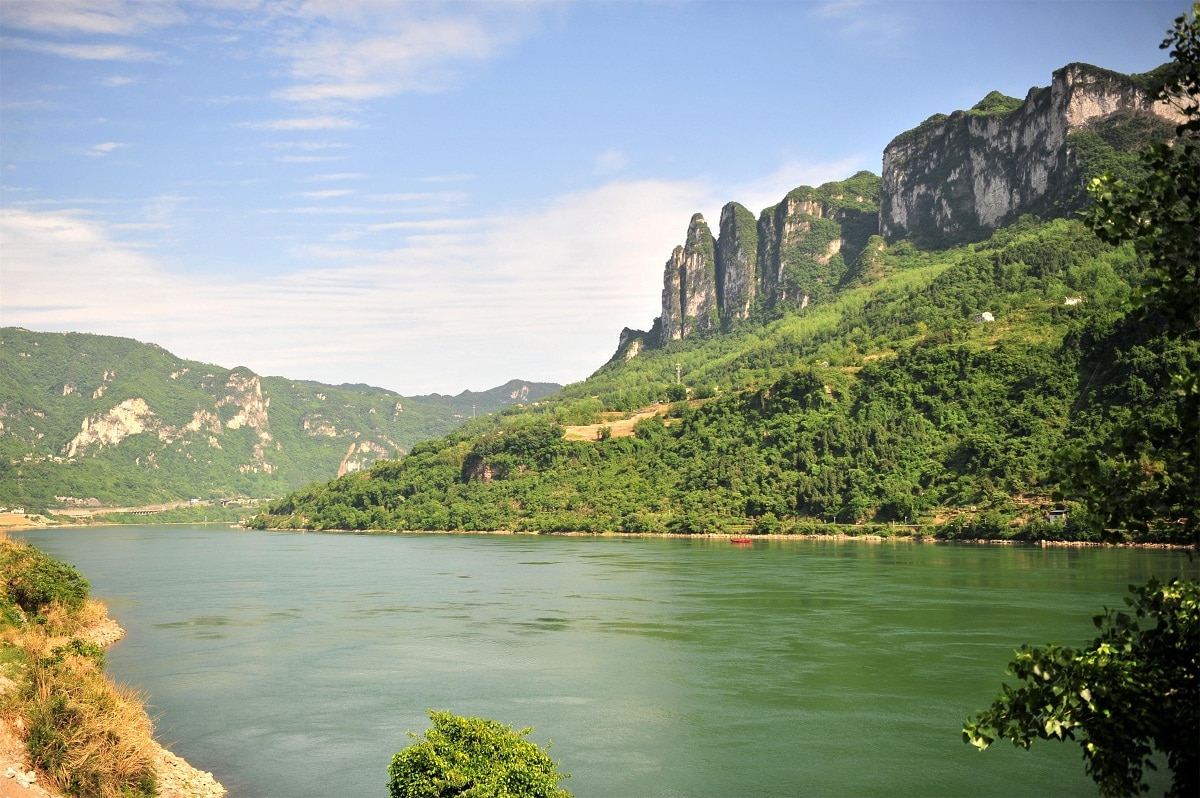
El yangtze river in China it is an impressive river with a total length of about 6.300 kilometers and a drainage area of 1.800.000 square kilometers. This makes it the third largest river in the world, after the Amazon and the Nile, and the longest river in its country and continent.
For this reason, we are going to dedicate this article to telling you how impressive the Yangtze River is, its characteristics and much more.
Key features

Its strong flow is significant on Chinese soil since it represents 40% of the water available in the country. In addition, at an economic level, the river is an important factor in agricultural production. On the other hand, its waters serve the largest hydroelectric power station in China and the largest dam in the world, the Three Gorges Dam.
The average flow of the Yangtze River is 31.900 m³/s, which belongs to the monsoon type, is affected by rain from May to August, and the flow first increases and then decreases from September to April. Winter is its lowest season.
It has more than 6.000 kilometers of extension and more than 1.800.000 square kilometers of basins. In total, it consumes a fifth of China's land area. At the same time, a third of the total population lives within its basin. Its impact on the economy is 20% of GDP.
Due to its length, it holds the title of the third longest river in the world, as well as the longest river flowing in the same country. From west to east, it runs through 8 provinces, 2 municipalities directly under the Central Government, and the Tibet Autonomous Region, winding and winding its way to the sea.
Its middle and lower part are different wetlands and lakes, which are interconnected forming a kind of spider web that allows the distribution of fauna. However, this has been lost due to the modifications to the process he received from the humans.
The Yangtze River is over 6.000 kilometers long and bears witness to a rich and diverse culture and ecosystem. From the Naxi and Tibetans who live in the mountains far from the rest of the world, through Buddhist shrines and relaxation, to busy industrial areas.
Production and uses of the Yangtze River

It has a different name in each region it runs in. At first, it was called Dangqu, the river of the swamps, or Drichu. At its midpoint it is called the Jinsha River. The river below is called Chuantian River or Tongtian River.
Another consequence of such a wide range of cities is the diversity of climates. The Yangtze River flows through some of China's famous "furnace cities" and is extremely hot in summer. At the same time, you experience other regions that stay warm throughout the year and regions that experience extremely cold winters.
The Rio Azul Valley is fertile. The Yangtze River plays an important role in irrigating cereal crops, with the largest area of rice, which represents 70 percent of production, wheat and barley, cereals, such as beans and corn, and cotton.
The river is threatened by pollution, overfishing, over-dams and deforestation. However, despite these alarms, largely due to overpopulation and its impact on wildlife, the river remains one of the most biodiverse bodies of water.
flora of the yangtze river
In various places along the Yangtze River, vegetation has been cleared, especially for human use. This represents a formidable threat as plants lose their ability to absorb water, which can lead to habitat loss.
Despite this factor that makes it impossible to identify the types of native vegetation and that introduced by man, typical river flora can still be found, especially in less populated areas such as those upstream and in parts of the middle.
The upper reaches of the river are found in the mountains with exponents such as willow and juniper, as well as other alpine shrubs. center section It is represented by hardwood forests and thickets, and the end point is a plain where rivers often overflow their banks.
The lower, more populated path is mainly used for growing cereals, and almost all the typical plants of the area have been cut down, leaving only a few bushes. In the estuary, as it flows into the sea, aquatic plants such as mangroves can be seen.
Fauna
The Yangtze River is one of the most biodiverse waters in the world. In the 2011 study, there were only 416 species of fish, of which around 112 were endemic to its waters. There are also about 160 species of amphibians, as well as reptiles, mammals, and waterfowl that drink from its waters.
The predominant fish that inhabits the Yangtze are the cyprinids, although other species of the order Bagres and Perciformes can also be found in smaller numbers. Among them, Tetradentate and Osmium are the rarest.
Factors such as overfishing, pollution and the number of buildings that interfere with the course of the river have ended or endangered a large number of endemic species, which only 4 of 178 can inhabit the entire course of the river.
Some species that can only be found in this area are the Yangtze and Chinese sturgeon, finless porpoise, white sturgeon, alligator, northern blackfish, and Chinese giant salamander.
Previously, the Yangtze was home to two of the most iconic species of its environmental disaster: the giant softshell turtle and the Yangtze dolphin, also known as the white softshell turtle. Both were declared functionally extinct after being critically endangered.
Tributaries of the Yangtze River

To maintain its strong flow, the Yangtze River receives a large number of tributaries from its source to its destination, in addition to the water it receives during the rainy season. Total, there are more than 700 smaller channels that feed the Yangtze. The most important of these is the Han nationality, which is in the intermediate stage.
The main rivers in the upper reaches of the Yangtze River are the Jinsha-Tongtian-Tuotuo water system, the Yalong River and the Minjiang River, and the upper reaches of the Wujiang River.
And in its middle section, it receives water from Dongting Lake, which in turn it is supplied by the Yuan, Xiang and other rivers. In addition, its left wing receives the galloping Han River. Downstream is the Huaihe River as a tributary. The Yangtze River used to flow back to Poyang Lake at this time, but now it has dried up.
I hope that with this information you can learn more about the Yangtze River and its characteristics.
I follow your valuable information daily that fills me with emotion by multiplying my general culture. Greetings